Q&A: Nat Dykeman on Lumière
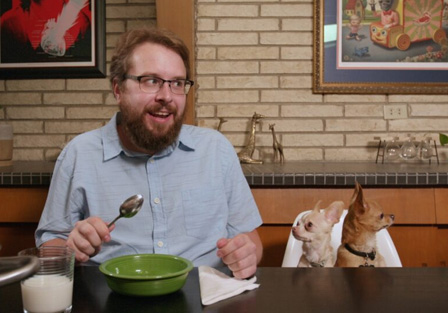
~~~~~
Since we covered all the base tenets of the brand-new-to-Champaign County film festival, Savoy Lumière, in our previous report, we’ve decided for this installment of our coverage to let you in on our conversation with its founder and director, Nat Dykeman. Now residing in Sidney with his wife, children, and fur babies while taking advantage of the “micro-urban” spoils in the immediate Champaign-Urbana region, Dykeman has a fresh sandbox to play in with his entrepreneurial verve and organizational strengths. He’s lived throughout the state of Illinois and fleshed out his interests in many ways –lasting accomplishments include the Lake County Film Festival, which is still going strong in its Grayslake home, and the Chicago independent feature QWERTY directed by Bill Sebastian and starring Dana Pupkin-Sebastian and the late Eric Hailey, which is still available to enjoy in all its modest charm – so we can expect him to find new ways in our neck of the cornfields to expand on his activities. The last year’s worth of single-show screenings held at the Phoenix Savoy 16 + IMAX in Savoy has led up to Lumière and, as Dykeman hints more than once in our exclusive interview, the possibility is real he will branch out with his Chambana Film Society label to the benefit of those in our communities who dare to “look elsewhere” for their arts, entertainment, and culture. Film Society films are not mass-produced product, that is guaranteed.
~~~~~
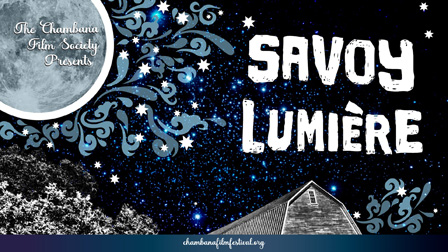
~~~~~
We’re grateful to have had the chance to get reacquainted with Dykeman. Not unlike with our friend in DIY film David Gracon, who we met long distance in the halcyon MICRO-FILM days well before he moved into the C-U area for several years and taught at Eastern Illinois University in Charleston, our man Dykeman has circled around in our world. Early on in his tenure with the Lake County Film Festival and during the course of yours truly preparing what would be the final issue of MICRO-FILM, we both moonlighted as guest jurors to watch many hours’ worth of DVD screeners with films that would play the first Illinois Independent Film Festival at the Arcadia Theatre of St. Charles in 2005. Meeting onsite at the venue and jabbering briefly between screenings, we did not keep in touch much after that due to your humble editor’s general avoidance of the Windy City hubbub. So now, we’ve met again and begun catching up about our lives and the movies. It’s been a treat, to be honest. Dykeman sports a big energy and loves to pour over whatever is on the table at the moment; you will get his honest thoughts at all times and he is not afraid to champion what he loves and call out when something sucks hard. It is with this seasoned blend of working experience and discerning taste that we root for his hard work to pay off and for Champaign-Urbana-Savoy to not only take note of it, but join him on an exciting film-filled journey.
The first Savoy Lumière runs through Monday, June 2, at the Savoy 16. Please visit the festival website for daily schedules as well as options to purchase your tickets in advance. Our talk about the impetus behind his new adventures in the C-U can be read below when you’re not living it up at the Lumière!
~ Jason Pankoke
Read on, MacDuff…
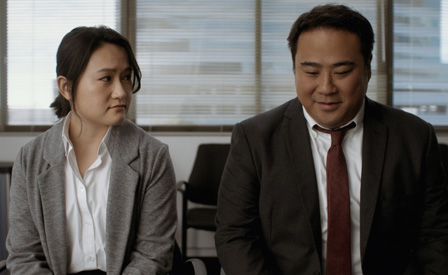
~~~~~
C-U Blogfidential: Greetings, Nat, and thank you for speaking with us! The first Savoy Lumière film festival at the Savoy 16 theaters, organized under the Chambana Film Society umbrella, will also be the first movie showcase of scope to premiere in Champaign-Urbana-Savoy in more than a decade. What kind of experiences and opportunities do you hope our cities and residents might get from attending Lumière?
Nat Dykeman: Ah ha! I will probably be using this phrase, “of scope,” more often.
I love how many short film festivals there are in town [although a] singular screening every year is not what many people picture as a festival. On the one hand, you have to remember that the Lake County Film Festival is still pretty much the only festival “of scope” where I’m from, so I’m kind of used to this situation. And, I’m new to the area, so I only have a sense of what’s come before and what I’m trying to live up to.
Where I’m from [in the Grayslake, Illinois region north of Chicago], there was no basis for something like this. People would hear about the film festival and ask, “What’s a film festival?” My standard answer is, “It’s like Bonnaroo [Music & Arts Festival] but for movies.” Someone asked me once if they had to make a movie to attend.
The history of film festivals and art theaters and an art scene in general [in Champaign-Urbana-Savoy] is mostly a relief to me, so I don’t have to hope that attendees are going to discover the magical world of film festivals and/or independent film [like they’re an unknown quantity]. I just hope they enjoy the movies and the experience, and [then] get excited about all of the other ideas for screenings I have.
Unlike the film festivals I’m used to, being once-a-year affairs, the fact that I’ve already had twenty screenings since last year also eases some of the pressure of the [Lumière] film festival. Recently, I’ve started thinking of this festival like a birthday party. It’s a celebration, certainly, but it’s not just celebrating itself but the whole year that’s come before.
CUBlog: You currently and have previously organized the Lake County Film Festival in Grayslake, as you’ve mentioned, for more than two decades prior to launching Lumière. As a film curator, how do you feel they differentiate from one another other than geographically where they are held?
ND: It’s so interesting, actually. The festivals are opposites of each other in nearly every way.
Lake County is sprawling – ninety screenings, with four different screenings running at once. The Savoy [Lumière] is a tight, one screen, fourteen screening affair. Because people [at Lake County] have choices about what they can see, I often feel free to program some really weird things even if I think very few people will come. Here, honestly, I don’t think there’s anything off the wall. There’s nothing playing that I don’t think your average person couldn’t enjoy. Even our projectors are the opposite, which is interesting. Lake County generally can’t show studio films but, being at the Savoy 16, we can, although it takes a lot more work getting things ready to show.
CUBlog: Do you plan to continue with Lake County as the Chambana Film Society gets its footing?
ND: I definitely plan on continuing in Lake County. As much as the two are polar opposites, they work together well. Lake County’s long history gives my work here a little extra attention and some credibility to what I’m doing here. The film festival industry is notoriously shady, and “first-year film festival” is usually spoken with some disgust among those in the know.
~~~~~
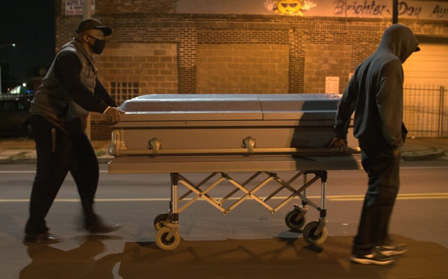
~~~~~
CUBlog: Lumière is a direct extension of the monthly Chambana Film Society screenings that you referenced. Why did you start up your programming in C-U with the monthlies?
ND: I knew when I moved here that I wanted to start a film festival, but, having as much experience in the industry [as I do] is not just about knowing what to do, but also what not to do. The first three years of the Lake County Film Festival, I lost about $6,000 combined. I knew I should start small and build an audience [in Champaign-Urbana]. If I had just come out of the gate trying to do a long weekend, I don’t think I’d have anywhere near the success that I’ve already seen for this festival, which has had a lot of attention [paid to it] and decent [ticket] sales already.
CUBlog: Very good. How has the overall response been from attendees to your shows before now?
ND: I’ve heard only nice and complementary things from everyone I can think of who has attended the event. Even the one where a technically difficulty led to an hour delay in the start time! People are constantly thanking me for doing screenings, but I always tell them I should be thanking them for their support!
CUBlog: When and where do you think the shows will resume after Lumière is done for the year?
ND: I announced at our last screening [of the documentary SLICE OF LIFE on April 27] that I’d be taking the summer off from screenings here [at the Savoy 16]. This job should potentially be fifty percent watching movies and fifty percent handling administrative things: marketing, social media, et cetera. Since I’m just getting this off the ground, it’s been much more administrative. I need to lock myself in my office for a month and watch a ton of movies…
The 2025 Lake County Film Festival is the first two weekends in September, and I’ll be back with screenings in the C-U on the third weekend of September under the banner of “CineSonic,” which is for music-related films. I also have a few screenings I’m hoping to set up on campus in the last quarter of the year, as well as bringing ongoing screenings back to the Savoy 16.
CUBlog: There is a notable percentage of the Lumière programming that is movies made by local creatives, including from the Chicago area, and those with local ties. How important was it to infuse Lumière with this angle, and who should we expect to be representing their work, locally or otherwise?
ND: Locally-made filmmaking should really be important for every film festival, so I’ve been working hard to connect with local filmmakers as much as possible. I feel really lucky that we are starting the first [Lumière] film festival with a local feature film as strong as BRIM. The plot and concept are fresh and different, and the visual style is striking. We have six or seven other local short films, all of whom have filmmakers expected to attend.
Obviously, the connection to Lake County has meant that I also had a lot of films connected to the Chicago area [submitted to Lumière] as well, and many of those films are expected to have filmmakers attend. Also, the writer/director of [the 8:30 p.m. Saturday feature film] THE OTHER PEOPLE should be coming in from Nashville.
~~~~~
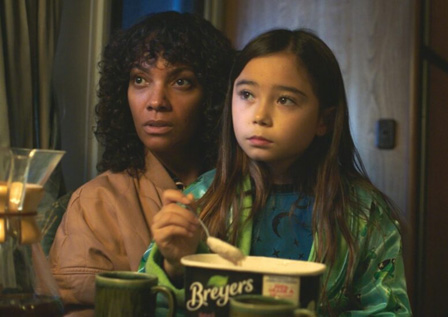
~~~~~
CUBlog: Do you see anything else happening in the near future that will add to your creative slate apart from the Film Society and Lake County events?
ND: I am really excited about my role as Event Coordinator for a new feature documentary called 25 CATS FROM QATAR. We just had our world premiere in Milwaukee, where we showed the film to more than a thousand people over the weekend. I’m in the middle of working on booking a one hundred city tour for the film, which is another reason I’m taking the summer off of screenings in the C-U unless, of course, something great falls into my lap. You never know what might show up! I will hopefully be bringing the [CATS] film to the area for a screening in October.
CUBlog: How do you think the Society and the C-U can or will grow with each other in the years to come?
ND: It’s somewhat nice that I’m not the biggest film event in town, so obviously there’s plenty of room for Film Society screenings to grow.
CUBlog: We certainly wish you the best on everything you’re doing or plan to do with the Chambana Film Society! To conclude our talk for now, what would you like to highlight that you might feel are the “best bet” options for attendees, especially ones who won’t be able to come to most or all of the shows during the five-day schedule of the Savoy Lumière, to really get a solid understanding of what the Chambana Film Society is all about?
ND: I very much try to not play favorites, so I’m glad you phrased it as understanding what the festival is about, so, I offer these thoughts presented in chronological order…
BRIM is a strong, distinct film. Filmed locally, mostly with local people, and [its opening night presentation at the Lumière is] a world premiere, to boot! The film was screened in a semi-private event last fall [at the Virginia Theatre in downtown Champaign] but this is apparently a different version with, I’m told, new footage filmed.
AJ GOES TO THE DOG PARK is probably unlike any other movie you’ve seen before. A no-budget, surreal comedy [set and filmed in] Fargo, North Dakota, DOG PARK has a higher jokes-per-minute (JPM) than the Zucker-Abrahams-Zucker movies [such as AIRPLANE!] and is more absurd than an evening of Adult Swim programming. It shares [a reputation as a notable] Fantastic Fest premiere with the similarly cultish HUNDREDS OF BEAVERS. I know I said I try not to play favorites with film festival titles but, the truth is, this is probably the best of any movie I saw last year.
And, SALLY … a journalist asked me [while I’ve been doing press for Lumière] if I thought the festival had a political frame because there are a lot of “political” titles. Unfortunately, everything is made political today. Certainly, there’s nothing political about a documentary about the first American man in space, but one about Sally Ride, the first American woman in space, apparently is. That said, this documentary came to me late in the process, and as soon as I saw it, I knew this would make a fantastic closing to the festival.
~~~~~
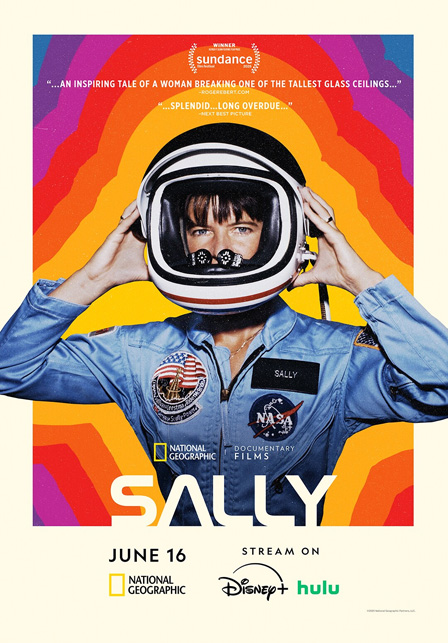
~~~~~
Interview conducted May 2025 via e-mail.
CUBlog interview © 2025 Jason Pankoke